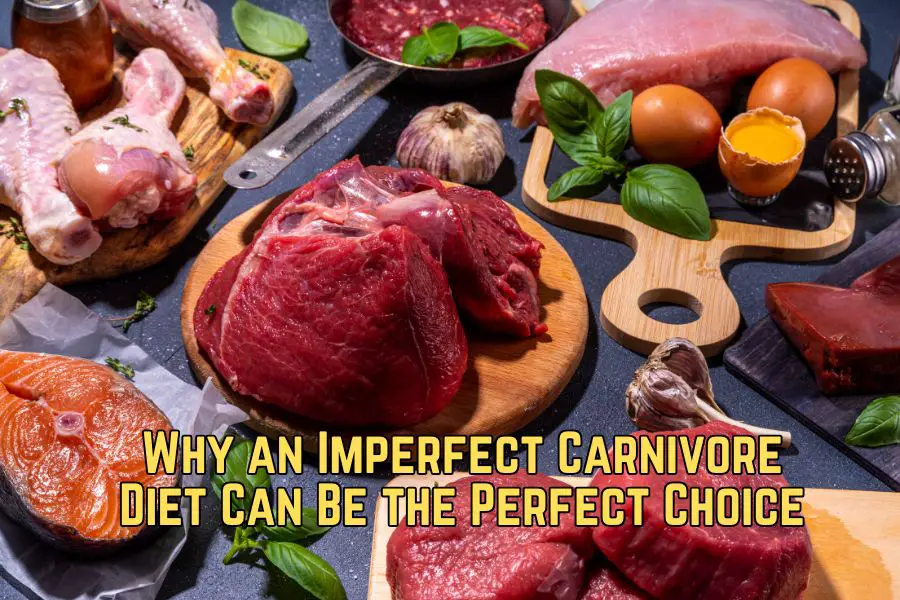Dr. Paul Saladino was trained as a conventional doctor but has gone a long way from his conventional root in a short period of time. Since discovering the carnivore diet, he has become a well-known advocate of the diet, written a best-selling book on the topic, and set up a company selling organ supplements for people on the carnivore diet.
In this post, we will look at Dr. Saladino’s background, how he discovered the carnivore diet, what he eats in a day and his current view of the carnivore diet.
Paul Saladino’s background
Growing up in a medical family with his father being a physician and his mother a nurse practitioner, Paul Saladino was interested in health and medicine since childhood.
He said even though his parents were healthcare professionals, he grew up on a standard American diet with cereals, bread, pasta, fast food, processed carbohydrates, and TV dinners. He also experienced irritability, childhood obesity, asthma, and eczema.
Saladino studied chemistry and planned to go to medical school afterward, but felt burned out after graduation and decided to travel the world instead. During his college years, he had a number of severe eczema flares and was treated with oral steroids which had horrible side effects like insomnia, mood swings, and weight gain.
After six years of adventures, he returned to work as a physician assistant and witnessed firsthand how Western medicine is being practiced. With its focus on treating symptoms with medications, he was observing how patients weren’t getting better and medications seemed to only delaying the inevitable.
Disappointed and filled with so many unanswered questions, Saladino went back to study medicine at the University of Arizona and later completed his residency in psychiatry at the University of Washington.
He realized that medical school is mainly training doctors which pill to give patients rather than teaching them to ask questions and finding out the root causes of their patients’ health problems.
Paul Saladino’s discovery of the carnivore diet
For 7 months during the time he was a physician assistant, Paul Saladino was a raw vegan. He ate nothing but raw fruits, vegetables, nuts, seeds, and sprouted grains. But this raw vegan diet didn’t suit him. He lost 30 pounds, felt bloated and gassy, and developed 7 cavities.
Later on, Saladino discovered the paleo diet and switched to eating a strictly organic diet based on animal and plant foods and eliminated all grains, beans, and dairy products. Although he had experienced improvements in mental health and body composition with the paleo diet, his eczema condition got worse with his Jiu-Jitsu practice.
During Saladino’s medical residency, his eczema continued to trouble him and at times it got so bad that his lower back was a mess, infected and weeping.
By that time, he already knew food has got something to do with it and tried to cut out most suspected foods including foods that are high in histamine, oxalate and lectin, nuts, seeds, and chocolate. What he was left with was avocados, salads, grass-fed meat, and a few supplements. However, he could not resolve his eczema problem completely.
Saladino first came across the carnivore diet when listening to Jordan Peterson on Joe Rogan’s podcast talking about his meat-based diet and how it helped him and his daughter with many seemingly incurable diseases.
He was curious and began studying the literature on this diet for a few months before deciding to give it a go. He immediately felt calmer and more positive and experienced improvements in energy level, mental clarity, and sleep quality.
Saladino reported that test results showed that his kidneys and liver are healthy, blood sugars are stable and normal, no detectable inflammatory markers, and no scurvy. He also hasn’t got a single eczema flare since going carnivore.
He has since motivated many people to start the carnivore diet and now runs a company called ‘Heart & Soil’ selling desiccated organ supplements.
What Paul Saladino eats on the carnivore diet
Paul Saladino is very passionate about nose-to-tail and he believes muscle meat alone won’t give you all nutrients you need.
Weighing around 175 pounds, he eats around 170-200 grams of protein in a day, which is roughly two pounds of meat. He also adds beef suet, egg yolks, salmon roes, raw honey, and organs like liver, kidney, heart, spleen, pancreas, testicle, and bone marrow.
He usually has only two meals a day which he usually consumes within a 7-hour eating window between 9 a.m. and 4 p.m. In one of the interviews he gave, Saladino said his typical day of eating is as follows (which is slightly different from what was set out in his book).
In the morning, he has a glass of water with electrolytes (2-3 grams of sodium chloride with magnesium and potassium). This is followed by a breakfast of:
- 3 duck egg yolks
- 5 oz of liver
- 8-10 oz of grass-fed meat
- 100-150 grams of grass-fed fat
- salt to taste.
For lunch he usually has the following:
- 3 duck egg yolks
- 8-10 oz of grass-fed meat
- 100-150 g of grass-fed fat
- salt to taste.
He finishes off the day with some calcium sources like bonemeal or eggshells.
Saladino used to be a strict carnivore when he wrote his book “The Carnivore Code” but it seems that he has changed his view recently.
He now incorporates honey and a bit of fruit in his diet such as banana, papaya, coconut, and rambutan. He said he felt great eating meat only but had the palpitation, cramp, and sleep disturbances that he couldn’t figure out why. But when he adds a bit of carb, these went away.
It shows that it’s important to be not dogmatic about your diet. A strict carnivore version may be the only choice you have if you have some underlying chronic health conditions. But if you are metabolically healthy and without any apparent health problem, you have the luxury of adding a bit of seasonal plant food to your diet if you wish.
How to eat a nose to tail carnivore diet
As mentioned above, Saladino is a big believer in a nose-to-tail approach to the carnivore diet. In his book, he suggests the following five tiers of the carnivore diet that you can choose to suit your personal preferences.
Tier 1 is a meat-based diet with a small amount of low toxin plant foods.
Tiers 2 to 5 are just animal source food but with different ranges of animal foods and organ meat.
Tier 1 – The carnivore-ish diet
This version of the carnivore diet is for people who just start the carnivore diet and want to lose weight and improve their health. It is suitable for people who can tolerate plant foods and don’t have chronic health problems like leaky gut or autoimmune conditions.
In this version, animal-based food is the center of the diet and accounts for 80-90% of the total food. Animal foods might include beef, bison, lamb, poultry, fish, eggs, and some dairy.
Some least toxic plant foods are also allowed. Examples of these foods are non-sweet fruits such as squash, avocadoes, cucumber (without skin and seeds), olives, and seasonal berries.
With regard to drink, Saladino suggests sticking to water only, preferably spring water or sparkling mineral water. Avoid tea, coffee, and alcohol.
A typical day of Tier 1 carnivore diet is as follows:
Breakfast:
- 3 eggs with 1 tbs of ghee
- 3 slices of bacon
- 1/2 avocado with salt
Lunch:
- 10 oz grass-fed rib eye steak with salt
- cucumber slices, romaine lettuce with olive oil/vinegar dressing
- 1/2 cup raspberries
Dinner:
- 8 oz lamb chop
- olives
- 1/2 avocado
- 1/2 cup blueberries.
Tier 2 – The meat and water carnivore diet
This version of the carnivore diet is for people who want to try out the exclusive meat-only diet for a short time.
In this version, you basically just eat meat and drink water.
This version is probably suitable for people who have health problems and suspect food is the cause. By just sticking to just meat and water and gradually introducing one food back at a time, you can figure out the exact food that is causing you problems in the first place.
A typical day of Tier 2 carnivore diet is as follows:
Breakfast:
- 10 oz grass-fed rib eye steak with salt
Lunch:
- 8 oz lamb burger with salt
- 4 strips of bacon
Dinner:
- 12 oz grass-fed NY strip steak with salt.
Tier 3 – The freshman carnivore diet
Tier 3 of the carnivore diet includes meat, eggs, seafood, and dairy if tolerated.
A typical day of Tier 3 carnivore diet is as follows:
Breakfast:
- 3 eggs cooked in tallow
- 4 oz NY strip steak
Lunch:
- 6 oz wild king salmon with butter or ghee
- 3 oz goat milk yogurt
Dinner:
- 6 oz shrimp
- 8 oz grass-fed rib eye steak with salt.
Tier 4 – The junior varsity carnivore diet
This version of the carnivore diet adds animal fats and some organ meat such as tendons, connective tissues, and liver.
A typical day of Tier 4 carnivore diet is as follows:
Breakfast:
- 3 eggs cooked in ghee
- 6 oz tenderloin steak
- 2 oz liver
Lunch:
- 8 oysters
- 8 oz bone broth
- 3 oz king salmon
Dinner:
- 8 oz grass-fed NY strip steak
- 6 oz steamed mussels.
Tier 5 – Optimal nose to tail carnivore diet
This version of the carnivore diet incorporates a full spectrum of organ meats like liver, heart, kidney, bone marrow, bone meal, etc.
A typical day of Tier 5 carnivore diet is as follows:
Breakfast:
- 3 eggs cooked in tallow
- 2 oz beef liver
- 1 oz kidney
- 10 oz NY strip steak with salt
- 14 oz raw goat milk
Lunch:
- 60g beef suet or fat trimmings
- 4 oz scallops cooked in tallow
- 2 oz bone marrow and 1/2 tsp bone meal
Dinner:
- 70g beef suet or fat trimmings
- 10 oz rib eye steak
- 6 jumbo shrimp
- 8 oz bone broth.
In his book, Saladino also gave an example of what he eats in a day which is slightly different from what he said in an interview and quoted above.
Breakfast: he drinks about 3 grams of Redmond Real Salt with a glass of spring water (Redmond Real Salt is derived from an underground inland deposit in Utah which is free from microplastics and other contaminants that are common in sea salts)
10:00 a.m. lunch:
- 6 egg yolks
- 90g beef suet or fat trimmings
- 2 oz liver
- 2 oz kidney
- 14 oz rib eye steak with Redmond Real Salt
3:30 p.m. dinner:
- 3 raw oysters
- 80g beef suet or fat trimmings
- 10 oz NY strip steak
- 2 oz thymus
- 2 oz pancreas
- 2 oz bone marrow
- 8 oz bone broth and 1/2 tsp bone meal.
Conclusion
Before the carnivore diet, I used to believe that a mostly plant-based diet is the healthiest diet for humans.
I was following a diet that was close to the Pagan diet (Paleo diet + Vegan diet) advocated by Dr. Mark Hyman, but I knew something wasn’t right because I didn’t feel well on this diet, so I kept searching.
Like Paul Saladino, I accidentally came across the carnivore diet when listening to a Joe Rogan podcast and heard Jordan Peterson talked about his experience.
After that, I began to actively search for information on this diet and read as much as I could about it. I adopted a cautious and gradual approach and felt better on this diet as I cut out more and more plant food.
I’m still learning about this diet every day and people like Saladino and a few other pioneers and vocal advocates of the diet are doing a great job to get more people on board.
If you are still hesitant, keep researching, reading, and listening and find out as much as you can about it.
If you would like to give the carnivore diet a try, here is a detailed guide on how to start the carnivore diet step-by-step.
References
Dr. Paul Saladino: The Complete Guide to the Carnivore Diet – 180 Nutrition
What Carnivore MD eats in a day
How I Eat In a Day! 2021 Update
This Doctor Knows How to Find the Root Cause of Your Medical Problems
The Carnivore Diet with Paul Saladino
The Carnivore Diet With Dr. Paul Saladino
Disclaimer: The information in this post is for reference purposes only and not intended to constitute or replace professional medical advice. Please consult a qualified medical professional before making any changes to your diet or lifestyle.





